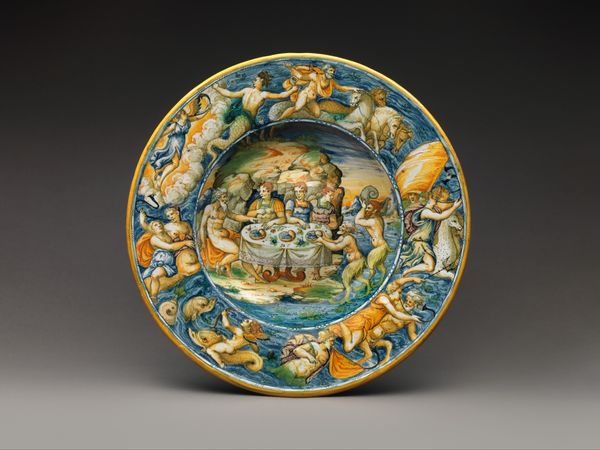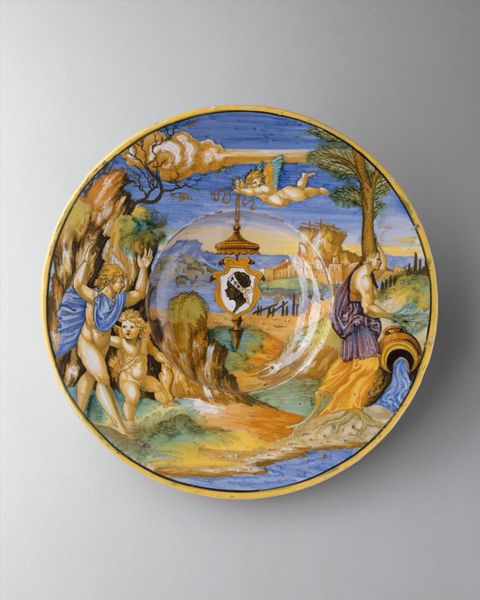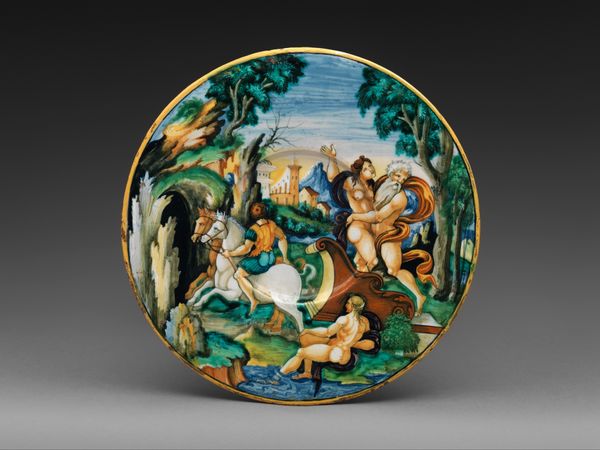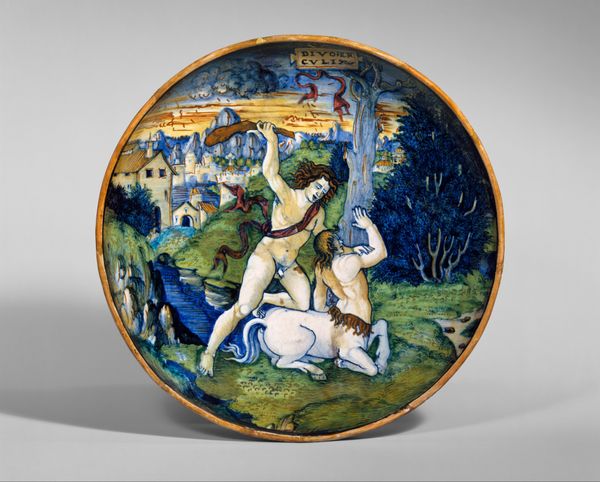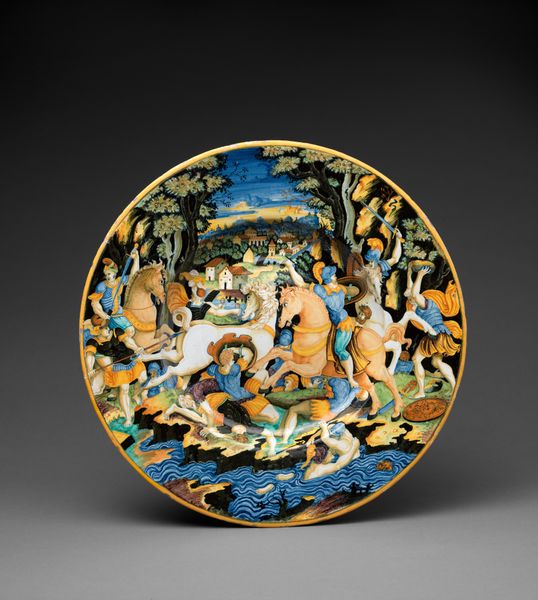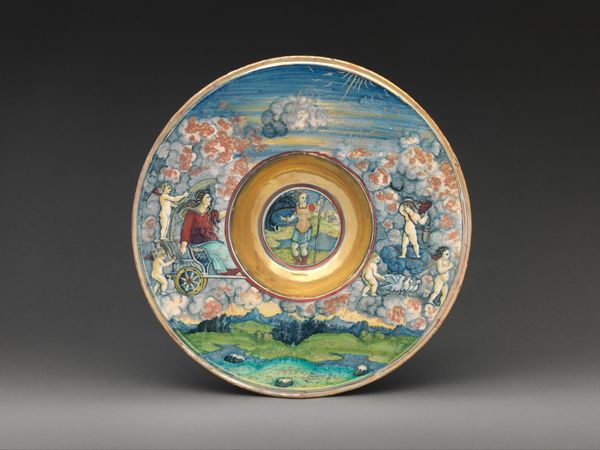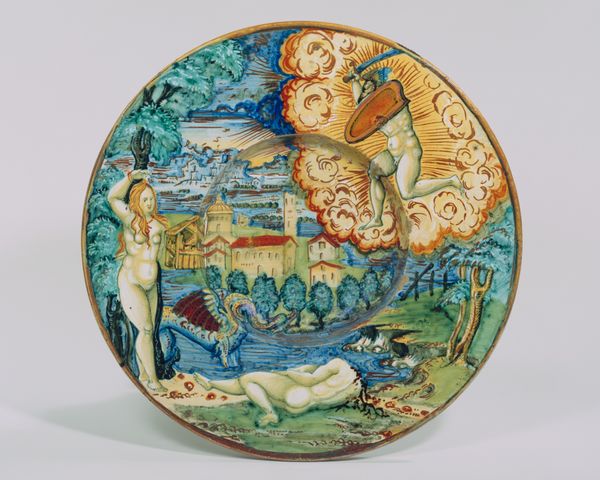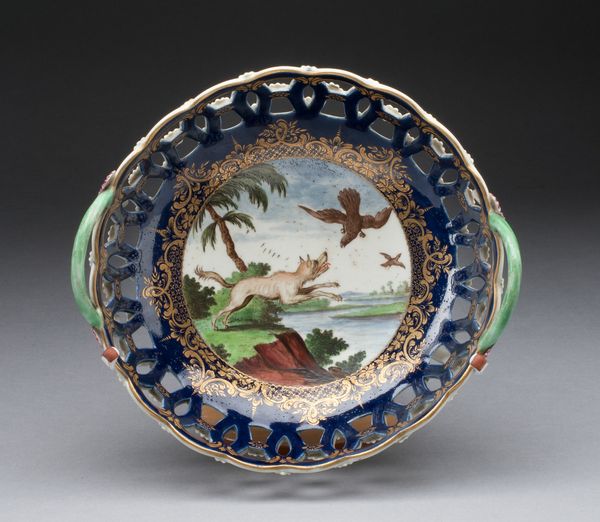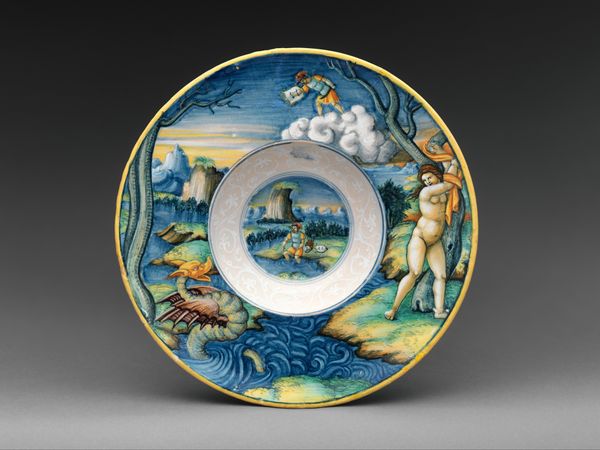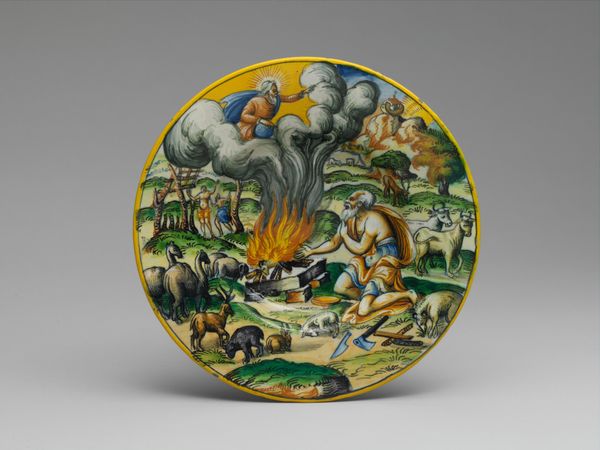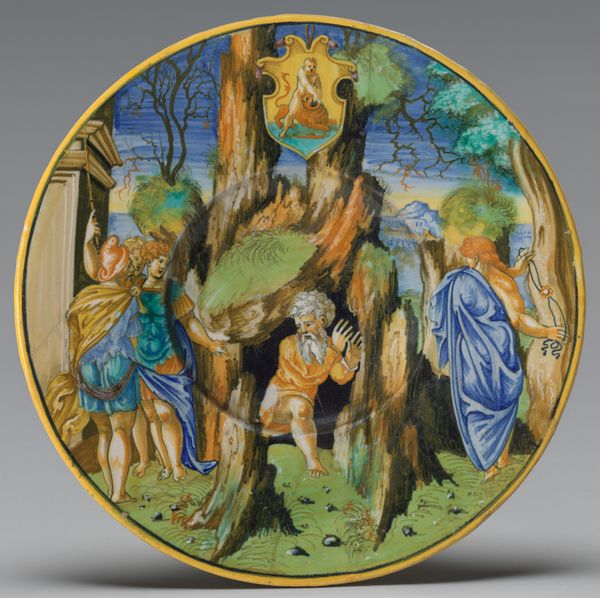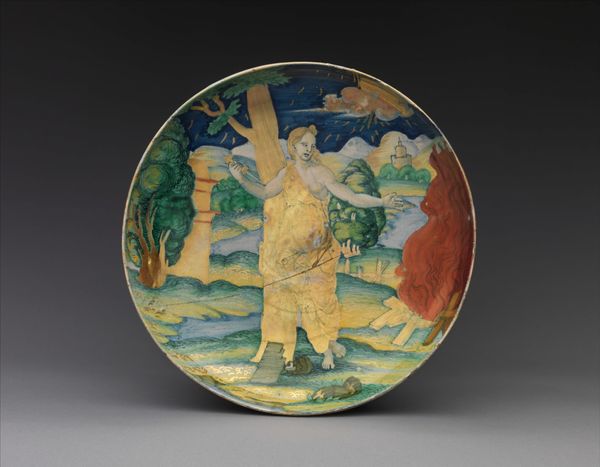
Shallow bowl on low foot with the Conversion of Saul c. 1525
0:00
0:00
ceramic, fresco
#
narrative-art
#
ceramic
#
fresco
#
decorative-art
#
italian-renaissance
Dimensions: overall (diameter): 26.6 cm (10 1/2 in.)
Copyright: National Gallery of Art: CC0 1.0
Curator: Let’s turn our attention to this intriguing ceramic piece. It's a shallow bowl created around 1525 by Francesco Xanto Avelli, titled “Shallow bowl on low foot with the Conversion of Saul”. Editor: My initial reaction is one of dynamic imbalance. There's a clear foreground/background contrast with vibrant figures offset against the delicate porcelain canvas. The rendering of figures in space presents interesting tensions. Curator: Exactly. The work depicts the biblical story of Saul’s conversion. Notice how Avelli captures the moment when Saul, who later becomes the Apostle Paul, is struck down by a blinding light and hears the voice of Jesus. The plate becomes a canvas to negotiate religious doctrine in Renaissance society. Editor: Yes, but consider the formal construction of the scene. The brilliant flash of light contrasts dramatically with the detailed natural elements of the landscape—note the artist's capacity to capture detail and texture on such a small surface. I find that the radiant source illuminates the figures, adding both dynamism and depth. Curator: It's more than just light, it’s also about power and resistance. Saul, a persecutor of early Christians, is brought to his knees, a moment of vulnerability imposed on him through divine intervention, which is depicted here within very specific humanist visual parameters. How would such art bolster power for certain classes? Editor: That’s compelling but also how the composition manipulates perspective. The scale of the figures shifts between foreground and background creating a unique pictorial compression and a visual tension pushing viewers into various planes. Curator: True, Avelli may be experimenting with depth, and certainly that adds layers of meaning. But what about its utility as a functional object? Did Avelli consider how its narrative interacts with the practical, social function of the plate itself and for whom this was created? How would it serve to illustrate how conversion can shift social standing and create opportunity? Editor: Perhaps; the semiotics of form are compelling nonetheless. This ceramic work truly reveals the dialogue between surface and symbolism. The rich glaze and intricate patterns underscore an almost baroque dynamism with classical lines. Curator: A fitting conclusion! It allows us to acknowledge the skill involved in capturing such a transformative narrative in a decorative, domestic object, while highlighting complex power dynamics. Editor: Yes, I must agree that the artwork gives much food for thought when examining the artist's skill at synthesizing these dynamic pictorial elements with grace.
Comments
No comments
Be the first to comment and join the conversation on the ultimate creative platform.
